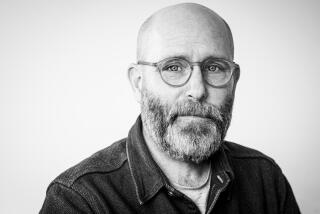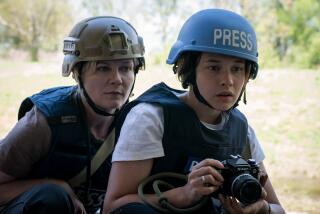Russell Lee, 1930s Photo Artist, Dies
- Share via
Russell Lee, whose photographs captured the somber futility of the American farm scene in the grim days of the Depression, is dead at the age of 83.
Lee, a painter before he became one of the best-known chroniclers of the 1930s and early ‘40s, died Thursday at his home in Austin, Tex.
He had been a member of the University of Texas fine arts faculty from 1965 until his retirement in 1973.
But he was known throughout the nation not as an academician but as a member of a unique group of camera artists assembled by the Farm Security Administration in the early 1930s.
Crossed the Midwest
Under the direction of Roy Stryker, the agency hired Lee, Arthur Rothstein, Walker Evans and Dorothea Lange. That team--which has had its work placed in museums, displayed in the Library of Congress and printed in dozens of lush anthologies--spent much of the Depression crossing the Midwest.
They toured the fallow fields and decaying farm buildings to produce visual evidence of the need for government support.
Lee photographed rural tenant farmers in Indiana, flooding in the Ohio River and Mississippi River valleys and the dispossessed in Minnesota.
“Early on,” he told an assemblage of photographers in Philadelphia in 1983, “I found out that it was important to get pictures of the interiors of the homes because that showed how people lived, what they ate . . . the furniture they had. . . . All these details became very, very important to the Administration (of Franklin D. Roosevelt) because on the basis of these photographs, Congress could release more funds to the rural areas.”
Coal Industry Investigation
Later he photographed urban blacks in Chicago and documented the internment of Japanese-Americans during World War II. After the war, Lee did the photography for an investigation of working conditions in the coal industry.
Lee came to photography as a young man after studying to be a chemical engineer in Pennsylvania and then painting at what is now the San Francisco Art Institute. His work with brush and pallette disappointed him, however, and he bought a 35-millimeter Contax camera to help him with his drawing.
Photography soon interested him more than painting, and his abilities brought him to the attention of Stryker about 1935.
In the book “Russell Lee Photographer,” F. Jack Hurley called Lee’s work “so objective and precise that it can almost be called transparent.” It was Lee’s ability to work unobtrusively with his subjects that produced the calm, simple pictures that became his trademark.
Lee acknowledged a talent that helped him thaw the reticence of farm families. He said he would talk with his subjects before he brought out his cameras, telling them that his work was not unlike their family albums.
“You understand about the pictures you have of your family. Well, I’m taking pictures of you because you are the history of today.”
More to Read
The biggest entertainment stories
Get our big stories about Hollywood, film, television, music, arts, culture and more right in your inbox as soon as they publish.
You may occasionally receive promotional content from the Los Angeles Times.










